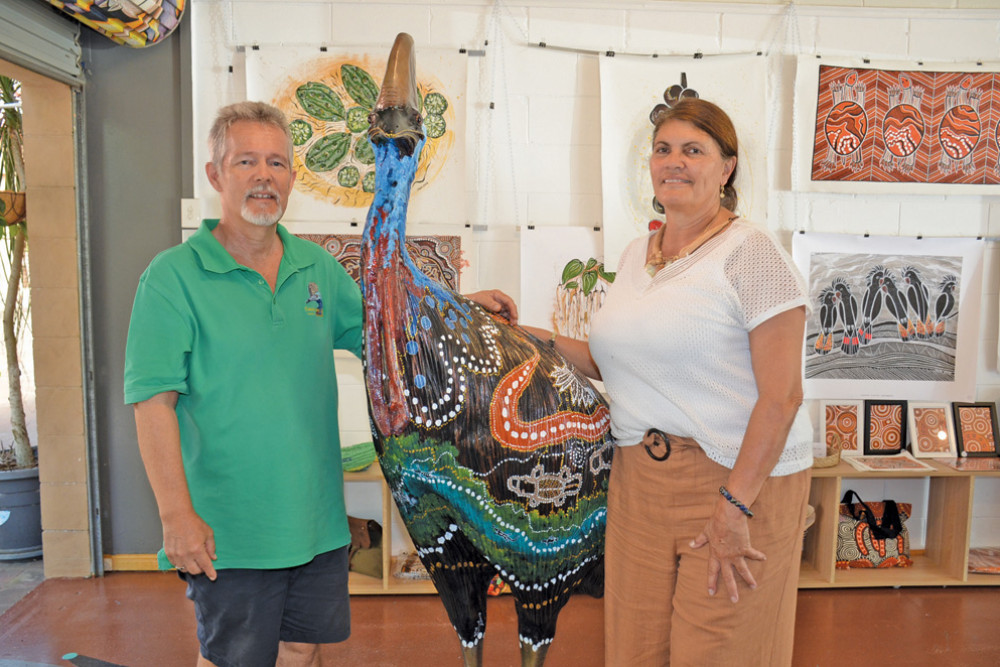Community & Business
6 October, 2022
Life-sized cassowary trail opens
A TRAIL of cassowary statues has been officially opened in Kuranda as the rare bird’s population continues to boom in the Far North.

Three life sized statues of cassowaries will be stationed at different parts of Kuranda and moved biannually to new locations.
The project founder and manager of the Cassowary Art Trail, Jurg Jutzi, has spent the last several months working alongside Kuranda Conservation Community Nursery and local artists George Riley, Rebecca Koller and Connie Rovina to create the unique art pieces.
Mr Jutzi says the trail is only three cassowaries so far but hopes it will expand in not only Kuranda but other townships in cassowary country.
“I was looking at what we could do that was different for Kuranda and I thought the cassowary is something special and important in our rainforests,” he said
“I spoke with different conservation groups up here and they jumped on board because many people don’t know what a cassowary is so this project will bring more awareness to them.
“I feel over the moon to be able to get this project going and to work three fabulous artists.”
First Nations artist, Ms Rovina, painted seven different dreamtime stories onto her cassowary with the guidance of the Elders.
“They are all local stories and they have been blessed by the local Elders,” she said.
“I am so happy and honoured to be participating because it is all about preserving the animals. A few years back there were only 12 recorded cassowaries in the region and now, to my astonishment, we have 40.
“I think people need to be more aware of the dangers of feeding them – even if it’s fruit, it doesn’t pass through their stomach properly – and slowing down especially on the range because that’s where they live.”


